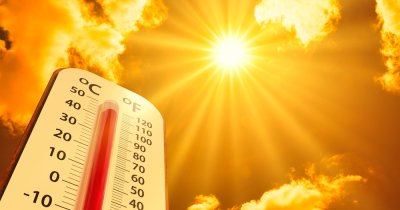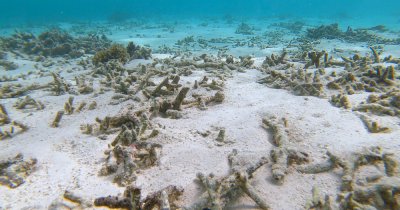According to BBC, two of the seemingly unusual rules that go in the territory are the WI-FI ban and the fact that all buildings are unlocked in case you need shelter from a polar bear.
The tiny town of Ny-Ålesund is the northernmost settlement in the world, located just 1.231 km away from the North Pole, and it is home to as many as 150 people in the summer, but just 45 brave settlers in the bitter cold winter.
Most of the settlers are actually scientists, which are drawn to the place specifically for its clean air.
Before it was used for scientific purposes, Svalbard was used for mining purposes between 1916 and 1962, until an explosion killed 21 miners and forced the evacuation and closing of the mining activity.
"Clean-ups have been carried out regularly since the 1960s when the mines were closed, but there is unfortunately still some pollution left both in the mining area and in the city", Hanne Karin Tollan, a research adviser at Ny-Ålesund base, explained.
A research station for pollution and climate change was built in the area in 1989 and it is called the Zeppelin Observatory.
Air quality in Svalbard might not remain pure for too long, however, due to the fact that air currents that travel from Europe, North America and other regions sometimes bring with them polluting particles, which obviously affect the air quality in the area.
Ove Hermansen, senior scientist at the Zeppelin Observatory and the Norwegian Institute for Air Research, said that "the Zeppelin Observatory is located in a remote and pristine environment, far away from major sources of pollution. If you can measure it here, you know that it already has a global prevalence. This is a good location to study the changing atmosphere."
Air quality research that happens at the Zeppelin Observatory is extremely important for calculating the rate of climate change and pollution trends and it can give important insights for where most pollution comes from.
Air samples are being taken five times per week by an employee from the Norwegian Polar Institute, and the air is examined for greenhouse gases, but also heavy metals particles, pesticides and pollutants associated with burning fossil fuels, among other things.
"The monitoring here at the observatory covers a whole range of issues. Environmental toxins are particularly interesting for their biological effects and the state of the Arctic environment, while measurements of greenhouse gases and aerosols are especially important in a global context for their impact on climate change", Hermansen added.
The research at Zeppelinfjellet was able to register the increase in methane gases that started happening in 2005, which saw a record high in 2019 and researchers are afraid that the amounts of methane found in the atmosphere endangers our plans to limit global warming to 1.5 degrees Celsius.

There is some good news, however, specifically the fact that researchers have seen a reduction in the levels of heavy metals particles, such as mercury and lead, and organophosphate pesticides.
Microplastics made their way in the Arctic
Recently, scientists at Svalbard have detected microplastics in the region, which they think got carried by air and fell in the form of snowfall.
Dorte Herzke, a senior researcher at Norwegian Institute for Air Research, said that "very small microplastic particles can travel considerable distances by air, similar to other particles that we already measure at Zeppelin. What is different for microplastics is that they are completely manmade, consist of very durable polymers and contain a broad mixture of chemicals, of which many are toxic."
"We are worried that microplastic particles are able to transport chemicals to the Arctic that otherwise would not be able to get there, potentially causing harm on the fragile ecosystems", she further explains.
In order to keep radio waves as low as possible, all mobile phones and WI-FI devices must be turned off, as the town is a radio-free zone.
Only researchers who are granted permission can use radio transmission equipment.
Besides the obvious cold weather, polar bears also pose a danger to the residents of the area, which is why no one is allowed to lock the doors of any building.
"You have to adapt and work around the polar bears, not the reverse", says Christelle Guesnon, one of the researchers working at the Zeppelin Observatory for the Norwegian Polar Institute.
The effects of global warming are being present in the region, as some areas that used to be connected to the mainland have now become solitary islands.
Rune Jensen, head of Norwegian Polar Institute in Ny-Ålesund, mentions that "today, we do experience the effects of a warmer Arctic in several areas. For example, the increased influx of warmer Atlantic water that alters the entire ecosystem in the fjord just outside Ny-Ålesund."
"It affects even the polar bears, which are forced to adapt their diet. Previously they used to catch ringed seals on the sea ice. Now we see a great rise in number of polar bears scavenging on eggs from seabird nests and catching seals from the land", he added.
 Mihai - Cristian Ioniță
Mihai - Cristian Ioniță












Any thoughts?